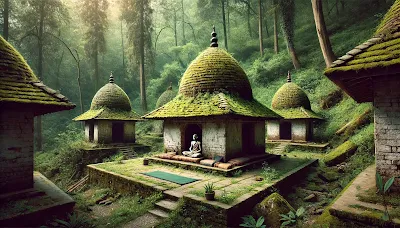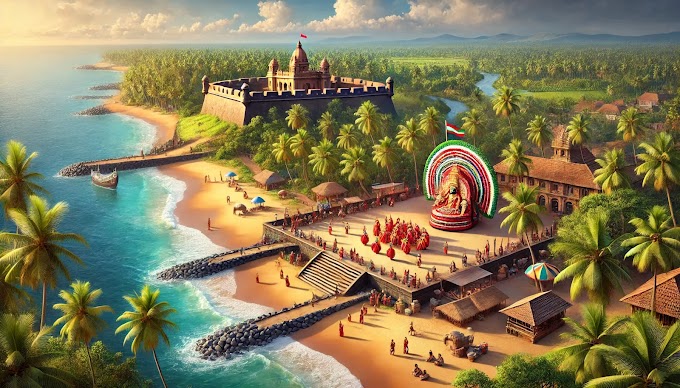History of Rishikesh
Rishikesh, often called the “Yoga Capital of the World,” is a holy city in northern India with a rich spiritual history. Located along the banks of the Ganges River at the foothills of the Himalayas, Rishikesh has been a sacred pilgrimage site for centuries. In Hindu mythology, it is said that Lord Rama did penance here after defeating Ravana. The city gained global recognition in the 1960s when The Beatles visited the ashram of Maharishi Mahesh Yogi, popularizing transcendental meditation worldwide. Today, Rishikesh attracts spiritual seekers, yogis, and adventure enthusiasts from around the world, offering a unique blend of spirituality and outdoor adventure.
Which God in Rishikesh?
Rishikesh is a spiritual hub nestled along the banks of the sacred Ganges River in northern India. Known globally as a center for yoga and meditation, this town also holds deep religious significance. Many pilgrims and visitors often ask: Which deity is worshipped in Rishikesh, and why is this place so important in Hindu culture?
Primary Deity of Rishikesh
The central deity in Rishikesh is Lord Shiva, who is highly venerated by devotees in this region. In Hindu belief, Shiva is known as the "Destroyer" and represents the forces of transformation and peace. The name "Rishikesh" is closely associated with one of Shiva’s forms, meaning “Lord of the Senses.” A prominent site dedicated to Shiva here is the Neelkanth Mahadev Temple, situated amidst dense forests. According to legend, it is at this spot that Shiva drank poison during the churning of the ocean, which turned his throat blue, giving him the name “Neelkanth” or “Blue-Throated One.
Overview of Rishikesh
Rishikesh is renowned for its scenic beauty, spiritual ambiance, and adventure activities. With its numerous ashrams, temples, and meditation centers, the city offers visitors a peaceful retreat. For adventure seekers, Rishikesh provides a gateway to exciting activities like river rafting, trekking, bungee jumping, and camping. The presence of the Ganges, majestic mountains, and dense forests make Rishikesh a destination where spirituality and adventure coexist harmoniously.
Location and Accessibility
Rishikesh is located in the Dehradun district of Uttarakhand, approximately 25 km from Haridwar and 240 km from New Delhi. Jolly Grant Airport in Dehradun, about 35 km away, is the nearest airport. Rishikesh has its own railway station, but Haridwar Junction, which is well-connected to major Indian cities, is a more popular option. The city is easily accessible by road, with regular bus services and taxis from Delhi, Haridwar, and Dehradun.
Weather and Best Time to Visit
The best time to visit Rishikesh is between October and April when the weather is pleasant and ideal for outdoor activities. Summer (March to June) can be warm, but the river breeze offers relief. The monsoon season (July to September) brings lush greenery but can restrict certain activities like river rafting due to heavy rainfall. Winter (October to February) is cool and comfortable, making it a popular season for travelers.
Top Tourist Attractions in Rishikesh
Rishikesh is home to a variety of attractions that cater to spiritual seekers, adventure enthusiasts, and nature lovers. Here are some must-visit spots:
Laxman Jhula and Ram Jhula
Laxman Jhula and Ram Jhula are two iconic suspension bridges over the Ganges River, connecting different parts of the city. According to legend, Laxman Jhula was the spot where Lord Laxman crossed the river on a jute rope. These bridges offer beautiful views of the river, temples, and surrounding hills. Lined with shops, cafes, and ashrams, they are lively spots where visitors can experience the spiritual charm of Rishikesh.
Triveni Ghat
Triveni Ghat is one of the most notorious ghats in Rishikesh, where pilgrims gather to take a holy dip in the Ganges. The ghat is also known for its evening Ganga Aarti, a spiritual ceremony involving lamps, chants, and offerings to the river. This daily ritual is a serene experience and provides visitors with a sense of peace and devotion.
The Beatles Ashram (Maharishi Mahesh Yogi Ashram)
The Beatles Ashram, located in the Rajaji Tiger Reserve, is where The Beatles stayed in 1968 and learned transcendental meditation. The abandoned ashram, now covered in graffiti and murals, has become a unique cultural site and a must-visit for Beatles fans. Visitors can explore the meditation halls, personal rooms, and art installations that reflect the ashram’s historical and spiritual significance.
Neelkanth Mahadev Temple
Located about 32 km from Rishikesh, Neelkanth Mahadev Temple is devoted to Lord Shiva. Set amidst lush forests and valleys, this ancient temple holds a significant place in Hindu mythology, as it’s believed that Lord Shiva consumed poison here during the churning of the ocean (Samudra Manthan). The temple is accessible via a scenic trek or drive and offers breathtaking views of the surrounding landscape.
Hidden Gems in Rishikesh
Beyond the popular attractions, Rishikesh has several hidden gems. Patna Waterfall, located on the outskirts, is a tranquil spot where visitors can enjoy a short trek through lush forests to reach the cascading waters. Vashishta Cave, an ancient meditation cave about 25 km from Rishikesh, offers a serene environment ideal for meditation and solitude. Kunjapuri Temple, located at an elevation, provides stunning views of the snow-capped Himalayas and is a fantastic spot for sunrise.
Local Guide Fees
Hiring a local guide in Rishikesh can offer deeper insights into the city’s history, spirituality, and hidden gems. Guided tours are available for around INR 500-1000 for a half-day, depending on the nature of the tour and group size. Many guides specialize in temple tours, heritage walks, and adventure activities like river rafting and trekking.
How to Reach Rishikesh
Rishikesh is accessible by various modes of transportation:
- By Air: The nearest airport is Jolly Grant Airport in Dehradun, about 35 km from Rishikesh. hacks and participated taxicabs are available in the field.
- By Train: Haridwar Junction, around 25 km away, is the nearest major railway station, with frequent trains from Delhi, Mumbai, and other cities.
- By Road: Rishikesh is well-connected by road, with regular buses from Delhi, Haridwar, and Dehradun. Many travelers also prefer renting cars or bikes to explore the scenic routes.
Local Culture and Cuisine
Cultural Insights
Rishikesh is deeply rooted in Hindu spirituality, with ashrams, yoga centers, and temples at every corner. The city is famous for its International Yoga Festival, held annually in March, attracting yoga enthusiasts from across the globe. Visitors can also experience Ganga Aarti, a daily ritual at Triveni Ghat, where the river is worshiped with lamps and prayers. The city’s culture embodies simplicity, spirituality, and a strong sense of community.
Famous Local Dishes
Rishikesh’s cuisine is predominantly vegetarian due to its spiritual atmosphere. Popular local dishes include aloo puri (fried bread with spiced potatoes), kadhi chawal (rice with yogurt-based curry), and malai lassi (a sweet yogurt drink). Street food enthusiasts can enjoy kachori and jalebi at local stalls. Since Rishikesh is a hub for health-conscious travelers, cafes here serve a variety of vegan, organic, and Ayurvedic foods along with traditional Indian fare.
Travel Tips and Safety
- Dress Modestly: Rishikesh is a holy city, so it’s respectful to dress modestly, especially when visiting temples and ashrams.
- Follow Safety Guidelines for Adventure Sports: Rishikesh offers various adventure activities, including river rafting and bungee jumping. Always follow safety instructions and choose certified operators.
- Respect Local Customs: Avoid alcohol and non-vegetarian food in public, as these are restricted in many areas of Rishikesh.
- Book in Advance: During peak seasons, especially around the International Yoga Festival in March, accommodations can fill up quickly. Book well in advance to secure your stay.
Budget and Expenses
Rishikesh is a budget-friendly destination with options for various types of travelers:
- Accommodation: Budget guesthouses start around INR 500-1000 per night, while mid-range options are INR 2000-4000. Luxury retreats and ashrams offer stays upwards of INR 5000.
- Entry Fees: Most temples and ghats are free to access, though adventure activities like rafting or bungee jumping have fees.
- Dining: Meals at local eateries cost between INR 100-300, while cafes offer a variety of options from INR 200-500.
Conclusion
Rishikesh is a unique destination that seamlessly blends spirituality, adventure, and scenic beauty. Whether you’re seeking inner peace at an ashram, practicing yoga by the Ganges, or experiencing the thrill of river rafting, Rishikesh offers an unforgettable journey. With its sacred river, majestic landscapes, and peaceful atmosphere, the city invites you to explore both your surroundings and yourself. Share your experiences or questions in the comments below, and let’s continue discovering the magic of Rishikesh together!.










